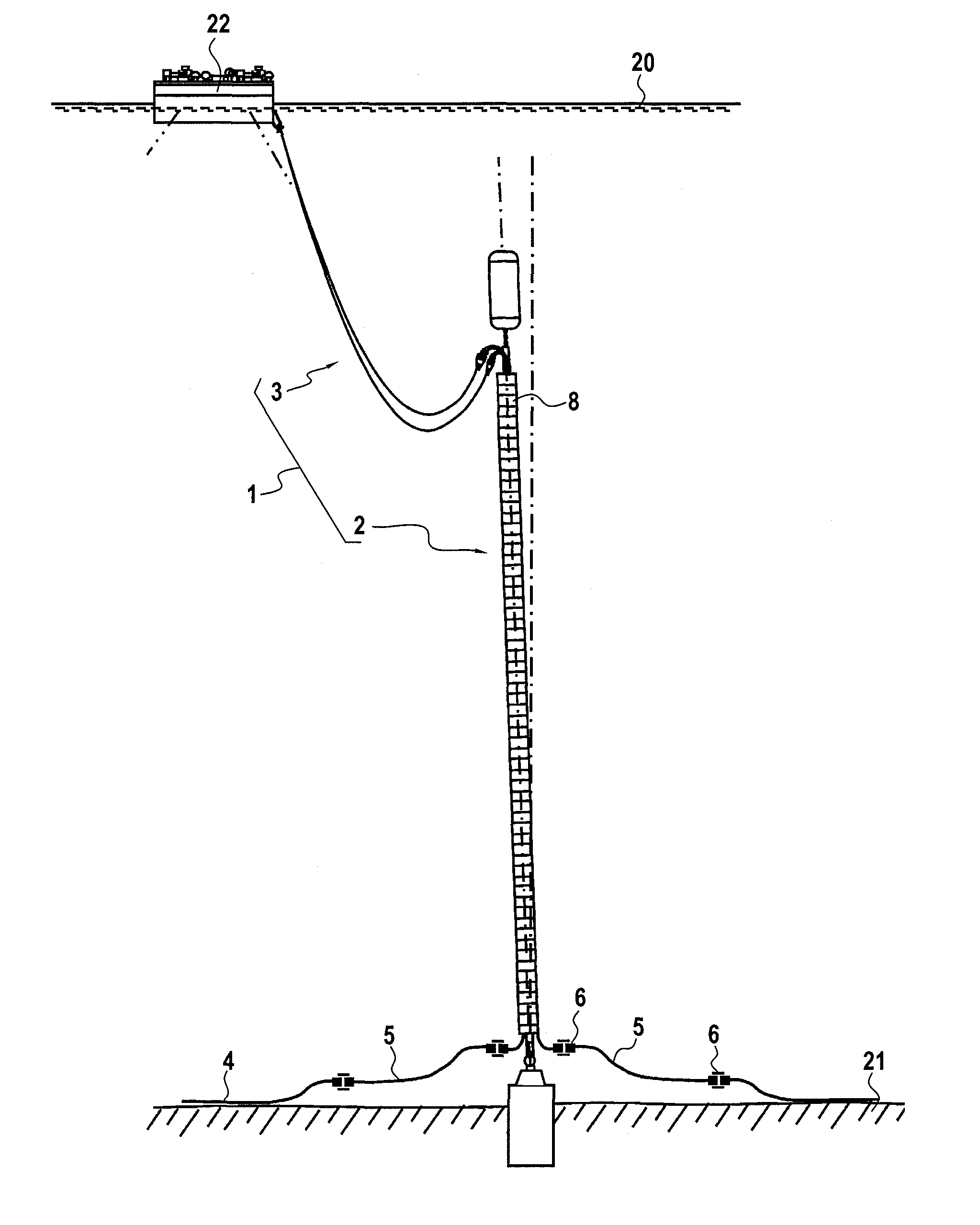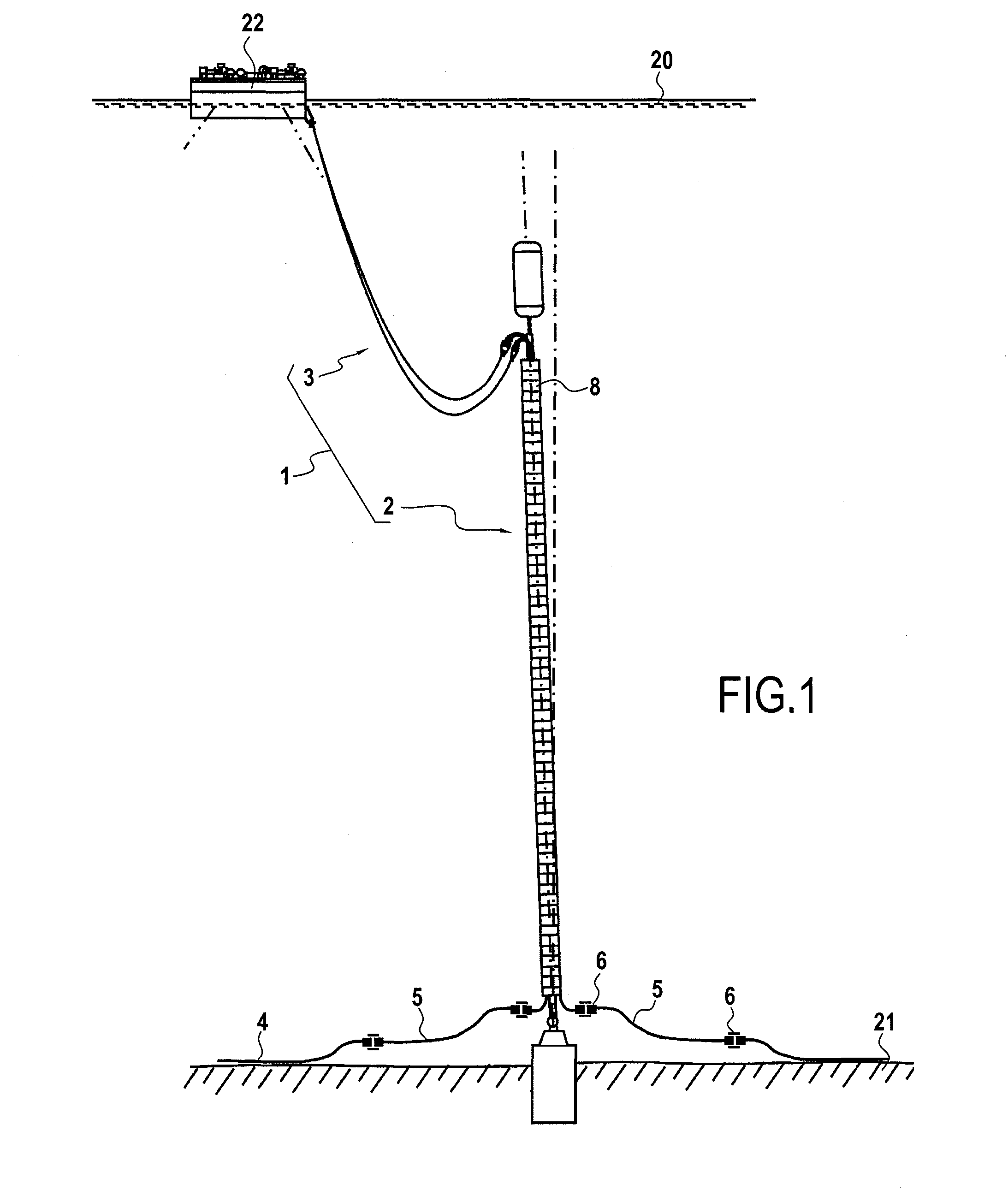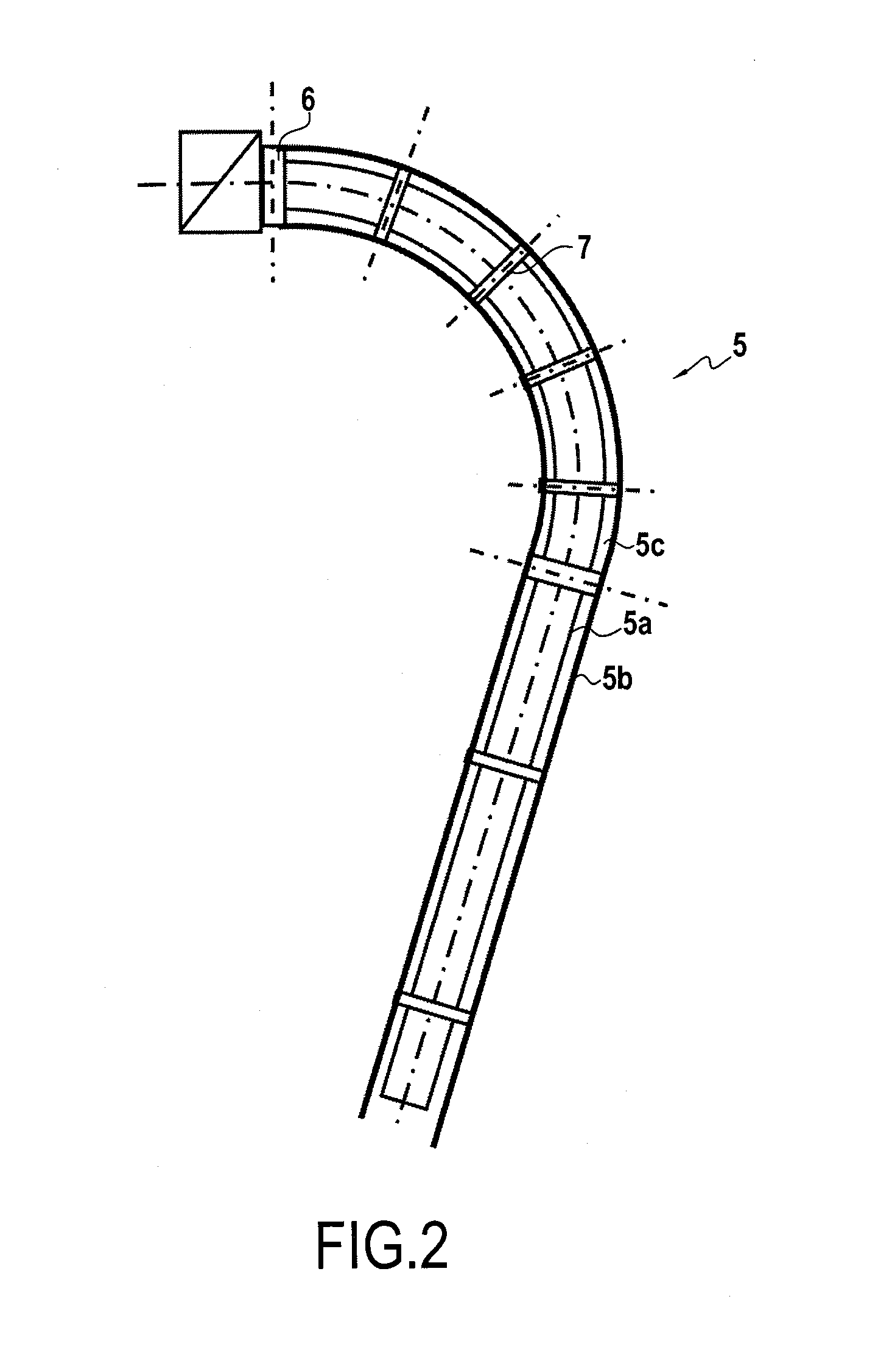Rigid material for heat-insulation and/or buoyancy for an underwater pipe
a technology of buoyancy material and thermal insulation, which is applied in the direction of pipe laying and repair, drilling pipes, mechanical equipment, etc., can solve the problems of insufficient thermal insulation, poor thermal conductivity and thermal insulation properties, and high cost of foam fabrication, so as to improve thermal insulation properties and buoyancy. the effect of improving
- Summary
- Abstract
- Description
- Claims
- Application Information
AI Technical Summary
Benefits of technology
Problems solved by technology
Method used
Image
Examples
example 1
[0132]In order to obtain 1 cubic meter (m3) of pasty fluid mixture of the insulating material of the invention, prior to curing, as obtained in step 4 / below, and of consistency that is sufficiently liquid to enable it to be put into place in the jacket, the following steps are performed:
[0133]1 / mixing 116.5 kilograms (kg) of PolyBd® with 350 kg of Ketrul® of density 810 kg / m3, and then evacuating and stirring for a few minutes;
[0134]2 / adding 19.2 kg of Inosate®, and continuing to mix under a vacuum for several minutes;
[0135]3 / incorporating 162 kg of glass microbeads and continuing to mix under a vacuum for several minutes until the material is in the form of a fluid paste; and
[0136]4 / pouring the fluid paste from step 3 / into the jacket, and then leaving it to rest for several hours or indeed several days until it has cured completely.
[0137]The corresponding volume ratios are 42.6% microspheres for 57.4% gel.
[0138]The cured insulating material of the present invention as obtaine...
example 2
[0141]In the same way, 1 m3 of pasty mixture prior to curing is obtained as in step 3 / above, but with a consistency that is more viscous by using the same process as described above to make 91.5 kg of PolyBd® with 274.5 kg of Ketrul®, and then 15.1 kg of Inosate®, followed by 209 kg of glass microbeads. The corresponding volume ratios are 55% microspheres for 45% gel.
[0142]The insulating material of the invention, known as GBG, as obtained after curing then has a density of 590 kg / m3, giving fresh water buoyancy of 410 kg / m3 of GBG, i.e. buoyancy of 422.5 kg / m3 of GBG in seawater having a specific gravity of 1.03. It can thus be observed that buoyancy increases by 16.4% compared with the more formulation of Example 1.
[0143]The thermal conductivity of this rigid insulating material of the invention or GBG is λ=0.13 W / m / K.
[0144]In comparison, an insulating gel and an insulating material of syntactic foam type constituted using the same polyurethane based on PolyBd® and Inosate® (with...
example 3
[0145]With the two rigid insulating materials of the invention, or GBG, of Examples 1 and 2, a Young's modulus is obtained that is closed to 400 MPa at the end of the curing process, which then decreases asymptotically towards 250 MPa to 300 MPa after 10 or 20 years (accelerated aging tests).
[0146]The bulk modulus of GBG is about 2250 MPa.
[0147]In comparison, an insulating material of the syntactic foam constituted by the same polyurethane based on PolyBd® and Inosate®, without Ketrul® 211, and with the same ratio of the same glass microbeads, presents a Young's modulus lying in the range 200 MPa to 600 MPa and a bulk modulus having a value of about 1600 MPa.
[0148]In comparison, an insulating gel constituted by the same polyurethane based on PolyBd® and Inosate®, having the same ratio of Ketrul® 211, presents a bulk modulus with a value of about 1900 MPa and a Young's modulus that is practically zero, since it then behaves like a fluid.
PUM
| Property | Measurement | Unit |
|---|---|---|
| temperature | aaaaa | aaaaa |
| temperature | aaaaa | aaaaa |
| density | aaaaa | aaaaa |
Abstract
Description
Claims
Application Information
 Login to View More
Login to View More - R&D
- Intellectual Property
- Life Sciences
- Materials
- Tech Scout
- Unparalleled Data Quality
- Higher Quality Content
- 60% Fewer Hallucinations
Browse by: Latest US Patents, China's latest patents, Technical Efficacy Thesaurus, Application Domain, Technology Topic, Popular Technical Reports.
© 2025 PatSnap. All rights reserved.Legal|Privacy policy|Modern Slavery Act Transparency Statement|Sitemap|About US| Contact US: help@patsnap.com



